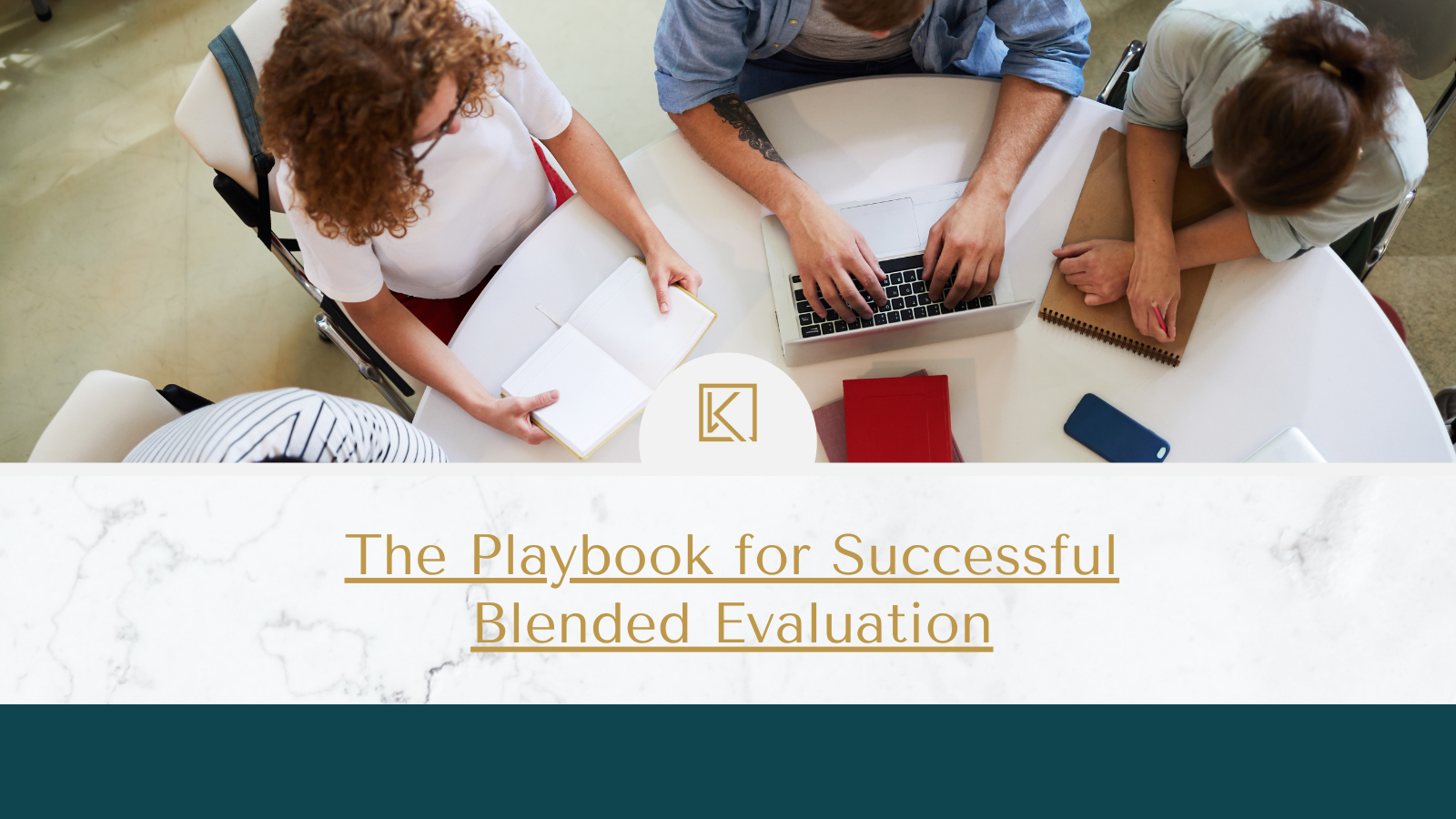The Playbook for Successful Blended Evaluation

When the game is on the line, teams turn to their playbook—a collection of strategies designed to lead them to victory. But what if your organization’s success depended on having the right evaluation playbook? This week, we’re taking a closer look at how to create a “blended evaluation playbook” that ensures your employee development efforts translate into real performance results. Just like in sports, having a well-crafted strategy tailored to your unique needs can mean the difference between success and failure. This playbook isn’t just about tracking progress—it’s about setting your organization up to win.
Define What Success Means
The first step in any successful playbook is to start with the end goal in mind. What does success look like for your organization? Whether it’s boosting productivity, improving customer satisfaction, or reducing turnover, you need to clearly define your desired outcome before crafting your plan.
Without clearly defined goals, your efforts can easily lose direction. Think of your goals as your blueprint for victory. When you know exactly what a win looks like, every step in your strategy is aimed at getting you there. By starting with the end in mind, you ensure that all your actions are intentional and aligned with your broader objectives.
Bring in the Right Players
Once you’ve defined your goals, the next step is to ensure you have buy-in and support from all the key stakeholders. This means securing backing from leaders who can provide resources, subject matter experts who understand the work, and involving the employees who will be affected. Getting everyone aligned from the start prevents obstacles down the road.
Just like in any team sport, having the right players in the right roles is key to executing the game plan. Without consensus and collaboration from your team, even the best strategies can fall short. By involving the right players early on, you build a sense of ownership and accountability, making it easier to overcome challenges as they come up.
Ask the Right Questions
With the end goal defined and your team in place, it’s time to dive into the current state by asking the right questions. Seasoned professionals turn to tried and true methods like the Kirkpatrick Model, Brinkerhoff’s Success Case Method, and the 5 Whys to uncover root causes and gather valuable insights. The quality of your questions directly impacts the quality of the data you collect, which will shape the direction you take.
Asking the right questions isn’t just about gathering information—it’s about understanding the nuances of your situation. By using these proven methods, you can spot performance gaps, uncover hidden challenges, and gather the insights needed to develop a strategy that’s not only effective but also tailored to your organization’s unique needs.
Expect the Unexpected
Even the best-laid plans need adjustments along the way. Your playbook should be flexible enough to adapt when situations change, new information emerges, or obstacles arise. Be ready to pivot your approach while still keeping your focus on the overall goal. Processes are rarely linear. In the ever-changing business world, flexibility is key because change is the one thing you can always count on.
A successful playbook isn’t just a set of instructions—it’s a flexible guide that supports real-time decision-making. By anticipating challenges and staying agile, you can turn potential setbacks into opportunities for innovation and growth, keeping your strategy on track even when things are uncertain.
It’s About Performance, Not Just Learning
Learning and development shouldn’t exist in a vacuum, separate from your organization’s overall performance. It’s crucial to tie your training initiatives to tangible business outcomes and clear metrics. Are employees applying what they learned on the job? Is their behavior changing as a result? These are the true measures of success.
The ultimate goal is more than just sharing knowledge—it’s about driving significant performance improvements that align with your organization’s strategic goals. By connecting learning directly to business outcomes, you create a clear link between your training efforts and the overall success of the organization, ensuring that every investment in development delivers measurable results.
In the high-stakes world of workplace performance, having a solid game plan is essential. This blended approach combines proven methodologies, a strong focus on outcomes, the flexibility to adapt in real time, and an understanding that learning is just one piece of the larger puzzle. Success, especially in employee development, requires a holistic strategy that integrates planning, execution, and ongoing improvement. By pulling these elements together, you create a strong framework that not only directs your efforts but also evolves with your organization’s needs, ensuring lasting success. With this playbook, you’ll be ready to tackle challenges and achieve your goals.
Ready to learn more? Check out the latest episode of the Kirkpatrick Podcast as Vanessa Alzate and Jim Kirkpatrick welcome Aurora Seguinot, Program Manager for the USCIS, to explore the art and science of program evaluation using the Kirkpatrick Model.
Listen or watch the latest episode here:
Don’t forget, the true magic happens when we modernize our training methods and see concrete results. Cultivating an environment of trust, active participation, and continuous enhancement increases the likelihood of our training programs’ success.
Interested in mastering the Kirkpatrick Model? Dive into the Kirkpatrick Evaluation Toolkit, your comprehensive resource for streamlined and impactful evaluation. Learn more here!





